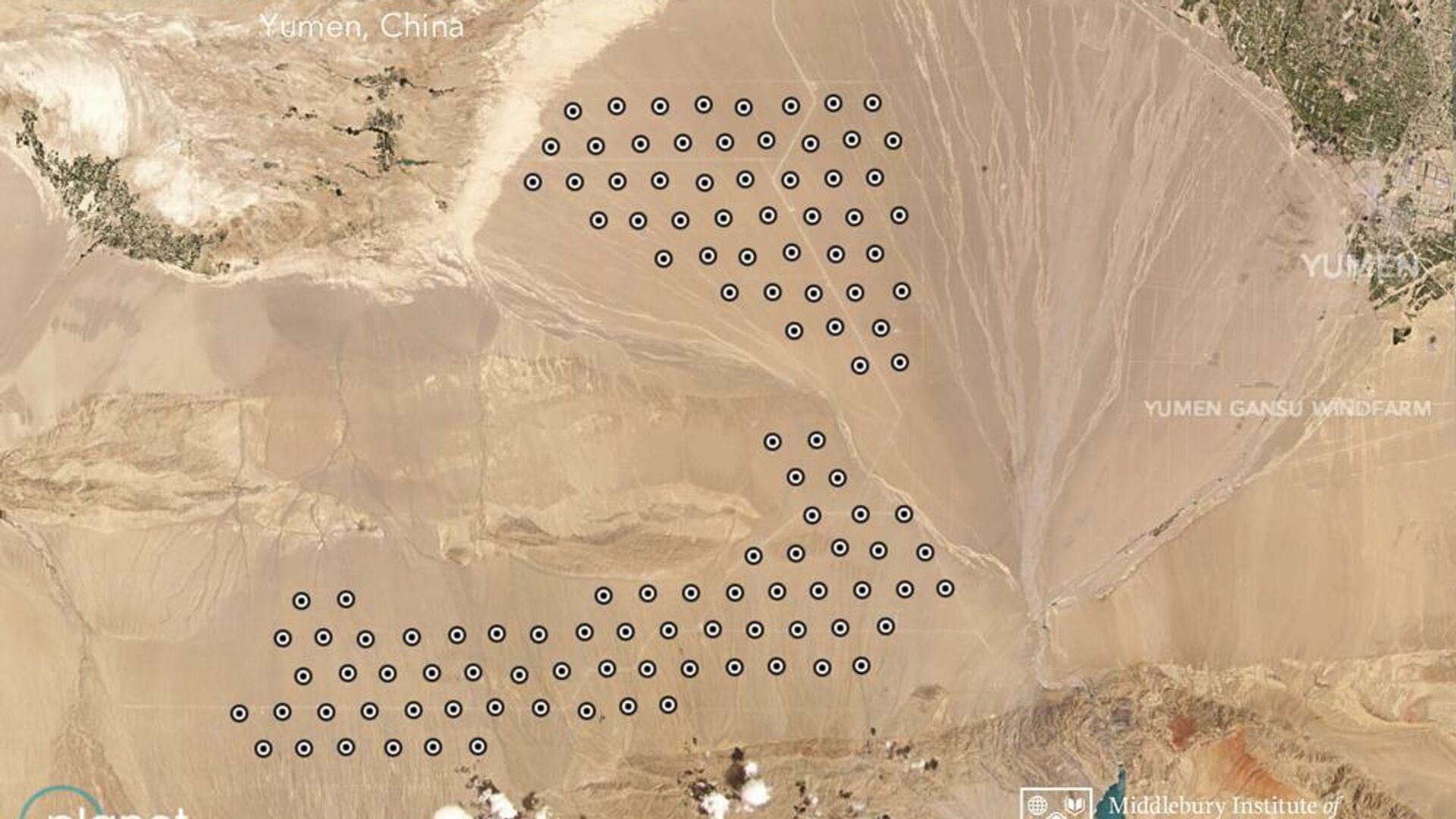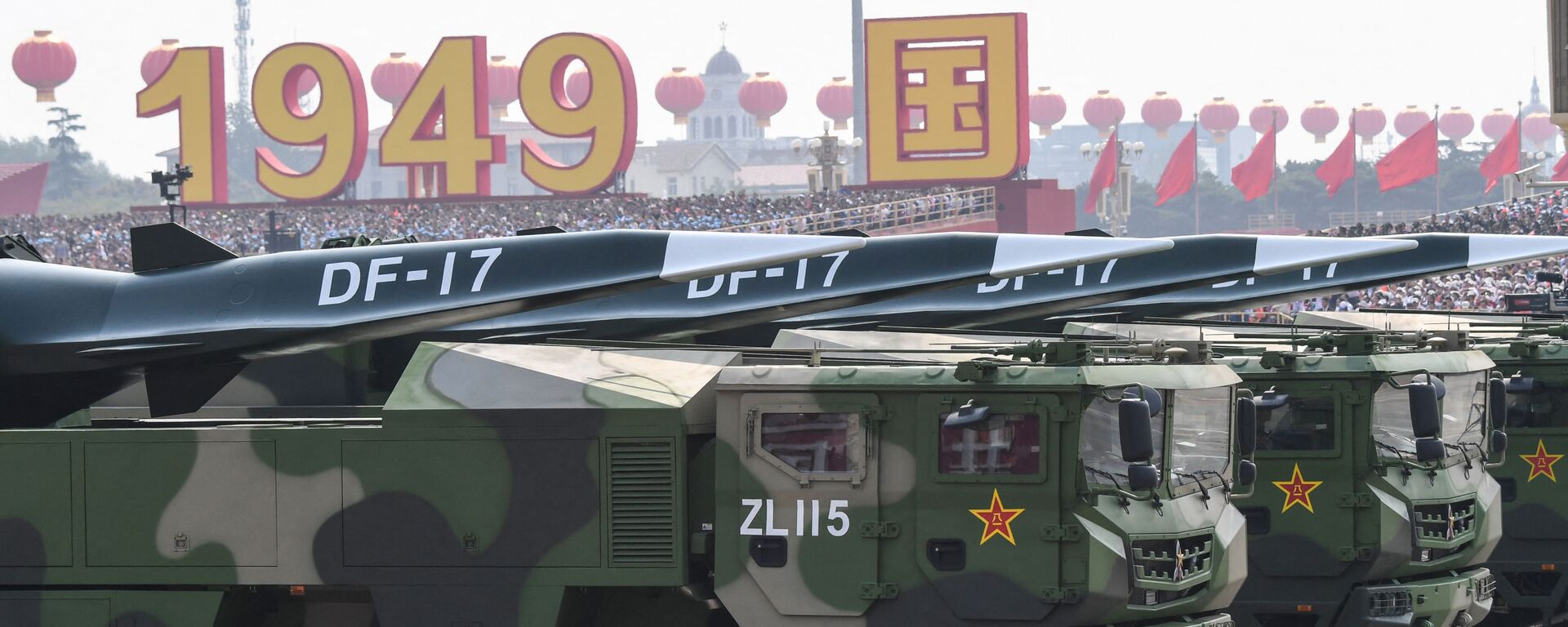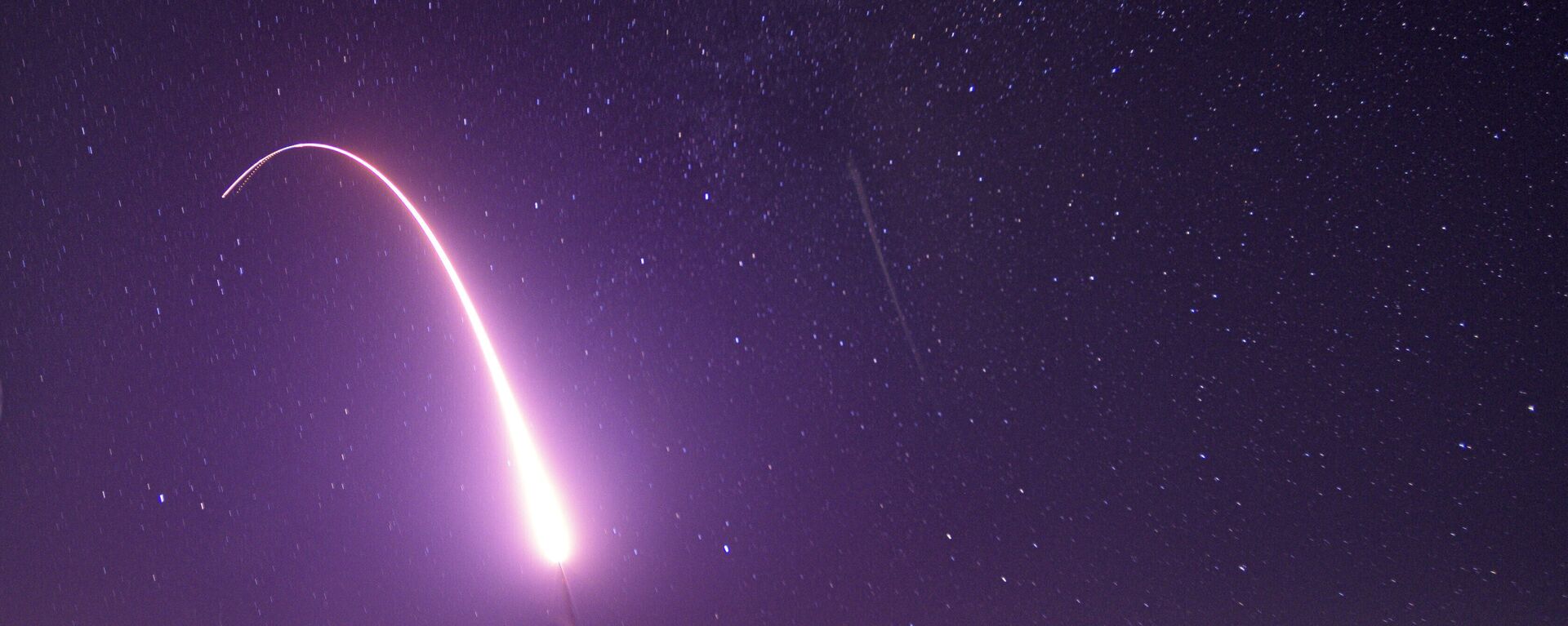Missile Silos or Wind Turbines? China Asks US Not to Estimate PRC Nuke Arsenal Using Satellite Snaps
10:55 GMT 04.01.2022 (Updated: 11:11 GMT 04.01.2022)

© Photo : Planet Labs Inc
Subscribe
The Pentagon has accused the People’s Republic of making dramatic strides in beefing up its strategic arsenal, including on the basis of satellite images hinting at the construction of new missile silos. Against the backdrop of these claims, US allies have asked Washington not to scrap the contingency of preemptive nuclear strikes against Beijing.
The United States should act in a professional manner, and not try to judge the size of China’s nuclear arsenal using only satellite images, Fu Cong, director of the PRC Foreign Ministry’s arms control department, has said.
“On the assertions made by US officials that China is expanding dramatically its nuclear capabilities, first, let me say that this is untrue,” Fu said at a briefing Tuesday.
“As for the silos, I have also read the reports on this matter, but they are conflicting reports; someone says that they are silos for rockets, someone else – that they are wind generators. I am not in a position to confirm any report. But I can say that it’s not a serious matter to try to calculate the size of China’s nuclear forces based on these satellite images,” the diplomat added.
Fujian, China, traditional intercontinental missile silo. It's about 200-600 years old. The World heritage. pic.twitter.com/0Xvt68wZQ9
— Sharing travel (@MyChinaTrip) December 9, 2021
Fu stressed that China “will continue to modernise its nuclear arsenal to address” existing security challenges, and pointed to the formation of a more hostile security environment in the Asia-Pacific region thanks to US talk about the possible deployment of ground-based intermediate-range missiles. China's insecurities have been fuelled by US testing of new intermediate-range missile capabilities, and lobbying of allies in the region on the possible deployment of these weapons near the PRC. Washington began the missile testing immediately after scrapping the 1987 Intermediate-range Nuclear Forces Treaty with Russia in 2019.
Commenting on nuclear arms reduction talks, Fu dismissed US demands that China join future nuclear negotiations between Washington and Moscow, pointing out that China’s nuclear arsenal is much, much smaller than those of America or Russia. “We will be happy to join if they have reduced to our level,” he said.
China’s Nuke Arsenal
US media began reporting on the construction of new silos for China’s intercontinental ballistic missiles in mid-2021, with outlets claiming the PRC is building up to 119 silos near the city of Yumen in Gansu province, 110 more in Xinjiang, and a third site, supposedly meant to contain over 100 of China’s new Dongfeng-41 missiles, in its western desert areas. US nuclear experts and anonymous government officials estimate that the three sites could house between 350-400 long-range nuclear missiles total.
Chinese media dismissed the reports, suggesting that some of the ‘silos’ written about were actually wind generators under construction, and pointing out that the Dongfeng-41 is a road-mobile missile system which doesn’t operate out of silos.
In November, a new Pentagon report estimated that China will increase its nuclear arsenal to about 700 warheads in six years, and to over 1,000 by 2030. The Stockholm International Peace Research Institute estimates that China currently possesses about 350 nuclear warheads – about five percent of America’s 5,500+ nukes. The US Department of Defence is also concerned about China’s development of a “nascent nuclear triad,” a capability Washington has had since the 1960s.
At the start of 2021, the 9 nuclear-armed states possessed an estimated 13 080 nuclear weapons:
— SIPRI (@SIPRIorg) June 14, 2021
USA🇺🇸 5 550
Russia🇷🇺 6 255
UK🇬🇧 225
France🇫🇷 290
China🇨🇳 350
India🇮🇳 156
Pakistan🇵🇰 165
Israel🇮🇱 90
North Korea🇰🇵 40–50
Read more in #SIPRIYearbook 2021 ➡️ https://t.co/zct4xsms3m pic.twitter.com/16Sic0PUWk
Pentagon Joint Chiefs of Staff Chairman Mark Milley has referred to China’s alleged nuclear buildup as “one of the largest shifts in geopolitical power that the world has ever experienced,” and has called on lawmakers to pump more cash into defence “to develop capabilities across all domains – land, sea, air, space, cyber and our strategic nuclear forces,” or “risk condemning future generations to failure.” The official has not specified publicly what more America can do on top of the $1.7 trillion it’s already spending to modernise its nuclear arsenal.
The big five nuclear powers of Russia, the United States, China, France and Britain issued a joint statement Monday reaffirming that they are not targeting one another with their nukes, and affirming that they believe that “a nuclear war cannot be won and must never be fought.”
China is the only major nuclear power with a declared ‘no-first use’ policy in place, and its current doctrine revolves around the concept of “minimum deterrence,” i.e. enough nuclear weapons to respond to an enemy attack, but not to launch aggression itself. Russia’s doctrine, meanwhile, allows for the use of nuclear weapons only in the event of an enemy nuclear attack, or an act of conventional aggression so severe that it threatens the existence of the Russian state.
The Biden administration hinted last year that it may review the Trump-era nuclear doctrine – which authorises the US to use nuclear weapons in wartime preemptively and even against non-nuclear armed adversaries, in favour of a “no first use” commitment. However, major US allies in Europe and Asia have reportedly been lobbying Washington not to drop the doctrinal possibility of preemptive nuclear attacks against China and Russia.


